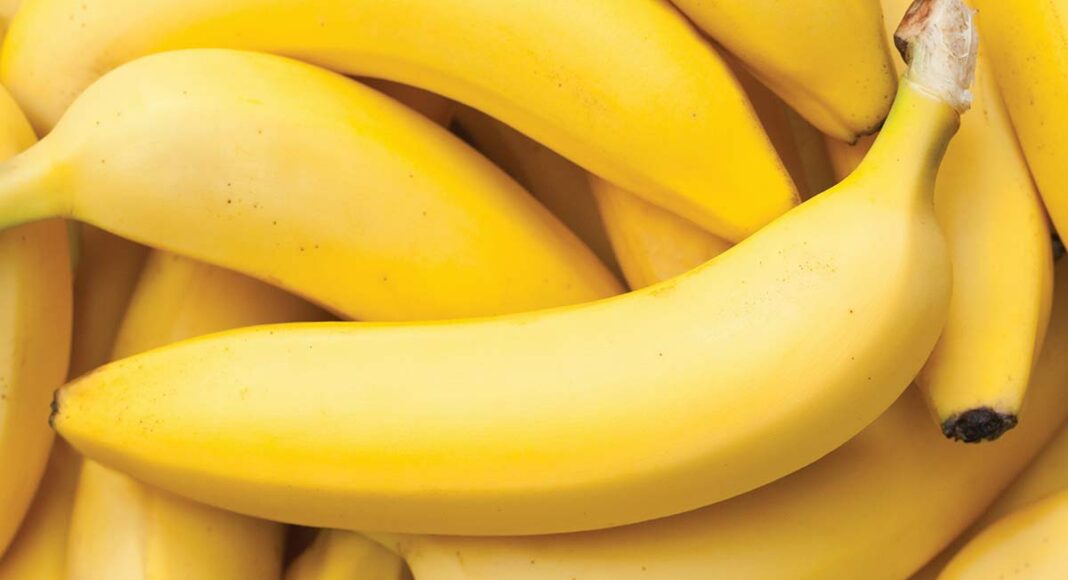Americans eat more bananas than any other fruit—more than 25 pounds per person per year, according to the U.S. Department of Agriculture.
“We go through six to eight 40-pound boxes a day,” says Jeremiah Bennight, produce manager at New Leaf Community Market in Capitola. “It’s definitely a staple fruit. We can’t go without it.”
But the question now is if they may have to, as an aggressive fungal disease threatens to wreak havoc on the worldwide production of this quintessential higher primate food.
Known as Fusarium wilt, the fungus has appeared in Africa, Asia and Australia. Although it poses no threat to humans, it is easily spread and many experts think that it’s only a matter of time before the disease crosses the pond into the Americas, which could be a crippling blow to worldwide banana production. The world’s top exporting farms are in Latin America, which is where Bennight says all of New Leaf’s bananas are sourced.
Why is one fungus outbreak threatening the whole world’s production? Because the vast majority of commercially available bananas are all one cloned variety, or cultivar, known as the Cavendish. This type of growing, known as monoculture farming, is cost-effective and consistent on a large scale, but the lack of genetic diversity leaves entire populations of the plants extremely susceptible to disease.
Peeling back the history of the banana reveals that this has happened before. During the middle of the last century, a similar strain of fungal disease sickened plants all over the world, and by the 1960s the world’s previous top banana—Gros Michel, which was larger and more flavorful than the Cavendish—was all but wiped out. Thanks to the rise of the Cavendish, the demise of the Gros Michel didn’t ultimately ruin the worldwide banana market (data from the United Nations Food & Agriculture Organization actually show a five-fold increase since 1961), the current situation has a major difference: if the Cavendish is wiped out, there is not another variety waiting in the wings.
There are actually more than 1,000 types of bananas worldwide, but most are either too perishable or unpalatable to be commercially viable. And no type of banana is commercially grown in the U.S., which means that for Americans there is no such thing as a locally sourced banana. But we are the largest buyer in what is estimated to be a more than $7 billion dollar export market.
It’s remarkable that despite their long, complex exportation process, bananas remain one of the cheapest fresh fruits in the supermarket. Don’t they leave a gorilla-sized carbon footprint? Not necessarily, says Bennight.
“It’s not as big of a carbon footprint as you would think because they’re shipped by boat in large quantities instead of on planes or trucks,” he says.
They are the cause of another environmental concern, however: discarded banana peels are a source of environmental methane, a greenhouse gas over 20 times more powerful than carbon dioxide, and one that contributes significantly to global warming.
Why do we stick with them, despite their complications? Because bananas foster good health in many ways. A great source of nutrition, they are low in calories and rich in fiber, potassium, and vitamins C and B-6. They also contain compounds called fructooligosaccharides, which promote healthy gut bacteria and could lead to better nutrient absorption and overall gastrointestinal health. Bananas are also a natural antacid, and could help alleviate heartburn. And they even contain some tryptophan, a chemical building block for serotonin, the brain’s “feel good” neurotransmitter.
Even the peels offer health and nutrition benefits (and we can digest them, as long as they are cooked). They can also be rubbed on rashes like poison ivy, psoriasis, and bug bites, and may reduce itch, inflammation, and promote healing.
When it comes to the issue of organic vs. non-organic, there is no split among banana aficionados. “I’ve heard that bananas are one of the fruits that people will not sacrifice eating conventional over organic,” says Bennight. Even chimpanzees agree. They will eat only the fruit of a non-organic banana, but give them an organic one and they’ll eat the entire thing, peel and all.
.Pulp Friction














